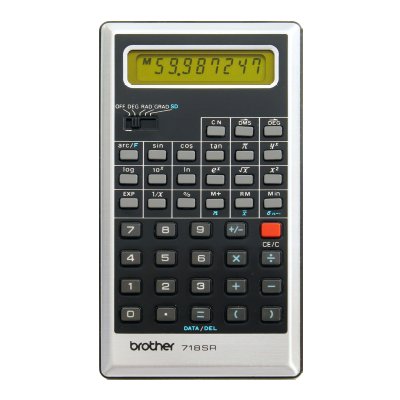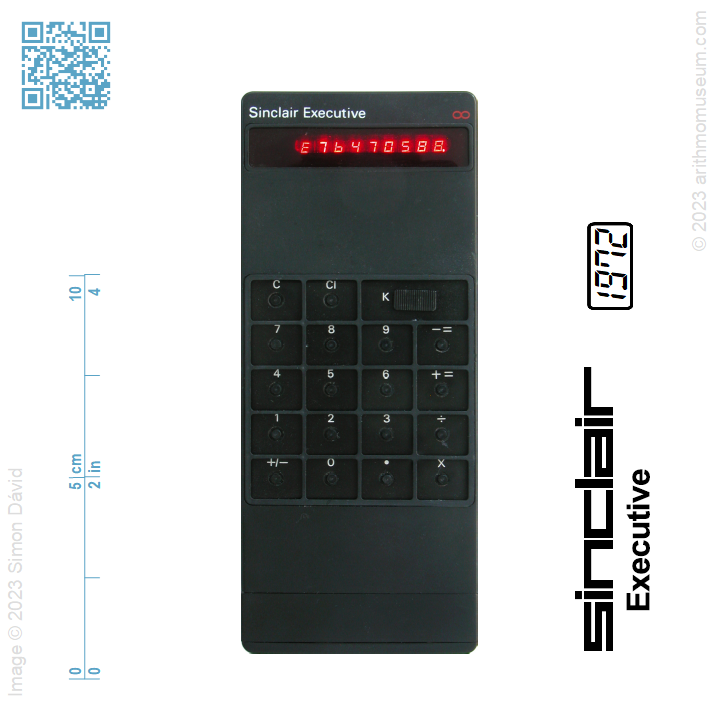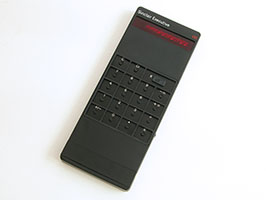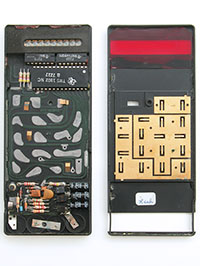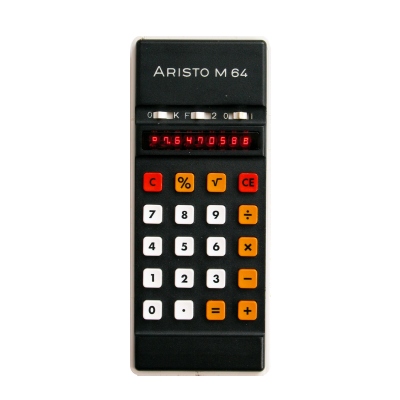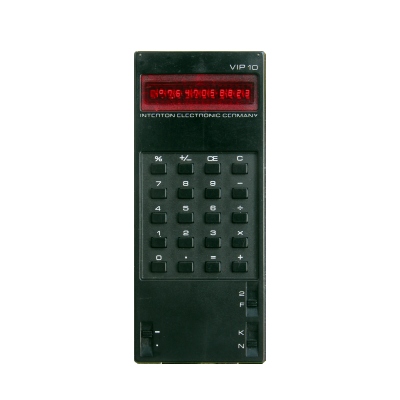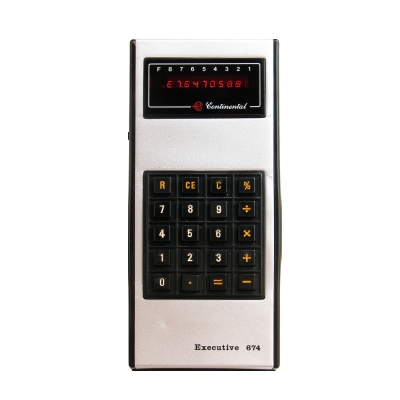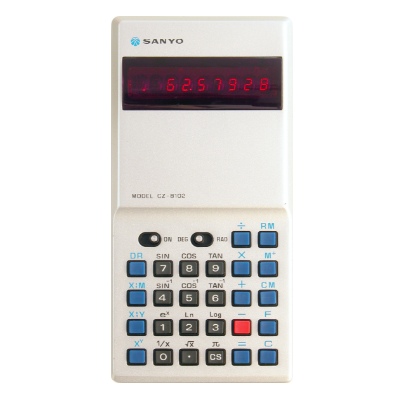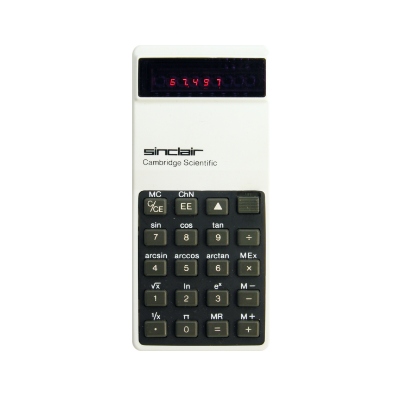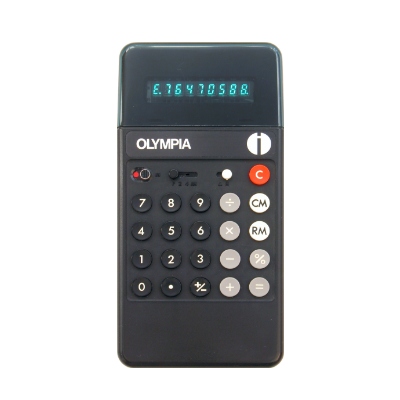Sinclair Executive
The Executive itself was produced in several versions: the first was built with a Texas Instruments TMS1802 circuit, but later the notation was changed to TMS0103; it is easily recognizable based on its large six-digit display elements. The second version (including the one shown here) uses 4 button cells and is built with Bowmar's small Optostic display, with driver circuits instead of discrete transistors. The third version was built with General Instrument's especially cheap, algebraic logic chip (C550), the former constant switch was used here to change the brightness of the display, since the machine turns on the constant register in response to the K key. The decimal adjustment slide switch found on the back of the Texas versions was not included in the third version, since the chip only works in floating point mode. It is interesting that although the 2×6 digit display of the earlier versions could work for up to 12 digits, and Texas Instruments offered 10-digit chips since 1973, such machine was not produced ever.
| Manufacturer: | Sinclair Radionics Ltd. (United Kingdom) |
| Mfg. date: | 1972 |
| Size: | 5,6×13,9×0,9 cm |
| Weight (ready for operate): | n.a. |
| Type: | four-function |
| Capacity: | 8 digits (input/display) 8 digits (internal precision) |
| Operating logic: | arithmetic |
| CPU: | Texas Instruments TMS1802NC |
| Registers: | 2 standard (with saving the pending operation) 1 constant (with saving the pending operation) |
| Features: | Ffloating-point notation Fixfixed-point notation: the listed decimals can be chosen (2, 4, 6) |
| Display: | 9 digit LED (Bowmar Optostic) |
| Power: | 4×LR44 button cell |
